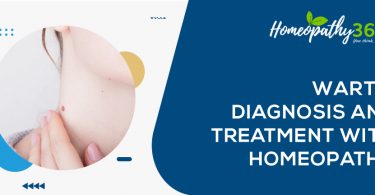
Author: Prof. (Dr.) Goutam Das M. D. (Homoeopathy)
Assist by: Dr. Annu Patel B.H.M.S.
[Abstract: This article deals with the understanding of the concept of Sycotic Miasm, on the light of the teaching of our Organon of Medicine & Homoeopathic Philosophy.]
Keywords: Sycosis-infection-incubation & prodromal period-primary symptoms-latent stage-secondary manifestations-therapeutic aim-anti-sycosic medicines.




Introduction:
How Sycosis Develop? The development of Sycotic miasm may we discuss about its mode of infection, internal development, primary manifestations, latent stage, and its secondary manifestations.
The state of Sycotic miasm may enter and developed into the organism as sexually transmitted venereal disease by impure coition, when the acquire Gonorrhoea has not been treated homoeopathically; then the Sycoitic State may developed.
There may be other sources of Sycosis as from ‘Suppressed gonorrhoea’, from ‘Bed effect of vaccination’, from ‘Animals Poisoning or animal bite as snake or dog bite etc.’, from ‘Bed effect of Dissecting wounds’, from ‘Prolong suffering from acute miasm like Smallpox, Chickenpox, Typhoid etc.’, and any stage it may infect the wife from husband or vice-versa and the children through the parents by the way of in-heritance Sycosis.
As internal development, once an entry is gained into the organism the miasm spread; for several days 8 to 12 days from the date of contact, nothing is visible. Once they have developed fully in the organism, the local symptoms break-out as “Primary manifestations of Sycosis”.
Sycosis:
This disease is infected through contaminated sexual intercourse. After few days up-to 8 to 12 days from the infection;
The fig-wart like growths with or without a greenish-yellow discharge from the urethra.
- These growths never disappear spontaneously. If they are destroyed by surgical means, ointments, caustic substances or cauterization etc., the disease is directed inwards and remains dormant or latent for a considerable period.
- Then under favourable circumstances, the symptoms of the secondary stage appear in due course of time.
This disease also like Syphilis infects the sexual partner in the same stage which the infecting agent belongs to.
- As a result, manifestations of the secondary or latent stage may appear directly without any primary manifestation in some individuals.
- Apart from the fig-wart like growth another prominent symptom of the disease is discharge of pus from the urethra, which is called Sycotic gonorrhoea.
- Of course, there may be discharge from urethra even without Sycosis and this is called acute gonorrhea.
- The chief differences are in Sycotic gonorrhoea there is not much pain or difficulty in urination.
- Acute gonorrhea may spontaneously disappear in course of some time and no constitutional complications are created.
- But, maltreatment may cause flaring up of latent Psora into the patent form resulting into manifestations of secondary Psora which can be cured by antipsoric alone.
- On the other hand, Sycotic gonorrhoea can never be cured without appropriate antisycotic treatment.
- Sycosis may complicate with Psora or Syphilis and to be treat accordingly.
The sycotic fig-wart may be dry or soft like sponge; in the latter case, offensive or even easy bleeding may be noticed.
- In acquired sycosis, these fig-warts at first appear on glans penis or prepuce of the male genitalia or on the vulva of the female genitalia.
- If forcibly removed, these may reappear in situ or on other parts of the body.
- If again removed forcibly from these places, they will be directed inwards and secondary symptoms will subsequently appear.
Let us discuss the symptom-syndrome of Sycosis in its various stages to recognizing them.
Primary manifestations of Sycosis:
- Gleet: Yellowish urethral discharge.
- Fig-wart: Spongy, dry, soft warts; first appears on glans penis in male and on vulva in female and then other parts of the body.
Secondary symptoms:
- Catarrhs of eye or nose.
- Fibrinous changes.
- Change in soft tissue in various organs like- uterus, kidney, liver, lung as pneumonia or acute
- Typhoid recovered slowly.
- Soreness of feet.
- Rheumatism aggravates.
- Finally killed the patient.
Congenital symptoms:
- Age 1year, marasmus ++
- Age 1 to 2 years, tendency to consumption/phthisis.
- Old appearance of face.
- Anaemia.
- Linteric stool (Diarrhoea with undigested food particles).
- No digestion.
- Every hot bring like cholera infantum.
- May with psoric or syphilitic symptoms predisposed.
Few symptoms of Latent Stage of Sycosis:
Let me now discuss various stages of Sycosis for its easy identification.
Mental General Symptoms:
- Suspicious, restless mentality, jealous and cruel.
- Loss of memory with regard to recent events, though the events of the long past are well remembered.
- Fixed ideas.
Physical General Symptoms:
- Amelioration (>) : > by un-natural discharges, which is green or greenish-yellow in colour.
- Aggravation (<): Complaints aggravate humid atmosphere.
- Amelioration (>): Walking or light exercise ameliorates.
- Intolerance: To spices, wines and meat, which < all troubles.
- Female: Leucorrhoea smelling like fish brine.
- Male: Enlargement of prostate gland and ailments originating from this.
- Extremities: Anatomical abnormality like Six fingers or toes, talepes (a birth defect, foot is twisted out of shape or position) etc.
Diseases: Long lasting inflammation. Anaemia. Contraction due to rheumatic affection. Destruction or abnormality of Cardiac valves. Any disease tendency to sudden death. Appendicitis. Diseases of genitalia or reproductive organs. Incoordination; this may be anatomical or functional.
Characteristic Symptoms:
- Head: Alopecia or baldness in circular spots.
- Nose: Redness of the nose.
- Skin: Warts, warty growths (Condylomata) or moles.
- Extremities: Thick, ridge and corrugated nails.
Diseases: Very slow recovery from acute disease or the period of convalescence is usually prolonged. Anaemia. Rheumatic diathesis.
Few symptoms of Secondary Sycosis:
Mind: Mania of performing Criminal acts or Suicidal tendency.
Head: Pain in the vertex. Dry dandruff. Circular bald spots on scalp or beard and falling of hairs.
Nose: Loss of sense of smell.
Female: Cyst formation in the ovaries. Inflammation or blockage of fallopian tubes producing infertility.
Skin: Immense inflammation or growth of any tissues viz., – tumour, warts, cyst etc. Local or generalised oedema or anasarca. Itching eruptions on face (Barber’s itch). Abscess or suppuration of Stich-line after surgical operation.
Such numerous disease syndromes or disease states denote the symptoms of secondary Syphilis. Except syphilis and Sycosis manifestations, all other chronic diseases are nothing but various manifestations of Psora. It’s enough to know that Psora may cause all sort of chronic diseases. We needs to recognise it know it and ability to perceive Psora and its various permutation & combination with Sycosis and Syphilis.
Homoeopathic Management:
Treatment and Management of Sycosis are done by the proper homoeopathic remedies which covers the whole nature of the Sycosis, can only bring back the urethral discharge and the patient going to be cure.
Few Anti-sycotic remedies:
Aesculus, Agaricus, Agnus castus, Alum, Anacardium, Ant, crud., Ant. Tart., Apis, Argentum met., Arg. Nit., Aurum, Aurum met., Arnica, Bar. Carb., Bryonia, Cal. Carb., Calad., Cal., Carbo. Ani., Carbo. Veg., Causticum, Cinnabaris, Con., Dulc., Euphrasia, Ferrrum met., Fluoric acid, Graphites, Hepar sulph., Helleborus, Iodine,Kali. carb., Kali. Sulph., Lach., Lyco., Mercurius, Medo.,Nat. sulph., Nit. Acid., Phytolacca, Psorinum, Puls., Rhus. Tox., Sabina, Sarsaparilla, saec. Cor., Selenium, Sep., Sanguinaria, Sil., Staph., Sulph., Thuja, Tuberculinum etc.
Bibliography:
1) Boericke W, Organon of Medicine; S.Hahnemann, translated by R.E.Dudgen; Indian edition, Calcutta, Roy Publishing House, 196
2) Hahnemann Dr. Samual, The Chronic Diseases, Their Peculiar Nature and Their Homoeopathic Cure; B. Jain Publication (P) Ltd., 1, Reprint Edition: 1998; BOOK CODE: B-2266
3) Dey S.P., Essentials of Principles and Practice of Homoeopathy; Published by: Dr. Mrs. Sabita Rani Dey, CJ-325, Sector II, Bidhan Nagar, Calcutta – 700091; November 2000 [1, 2. 3, 4]
4) Kent JT, Lectures on Homoeopathic Philosophy; Memorial edition, B.Jain Publishers Pvt. Ltd., New Delhi, 1990 [5]
5) Roberts HA, The Principles and Art of Cure by Homoeopathy; B.Jain Publishers Pvt. Ltd., New Delhi, 1992
6) Close Stuart, The Genius of Homoeopathy; B.Jain Publishers Pvt. Ltd., New Delhi, August 2002
7) Allen JH, The Chronic Miasms Psora and Psuedo-psora; Volume 1 & 2; B.Jain Publishers Pvt. Ltd., New Delhi, Reprint Edition: 1998; ISBN 81-7021-082-8; BOOK CODE B-2006
8) Bandhyapadhya N, Oushadh pariyachay; HPCO, Calcutta, 12th edition [6]
About Author:
Prof. (Dr.) Goutam Das M.D. (Homoeopathy)
Dept. of Organon of Medicine, AJSHMC&RI, Mehsana, (Gujarat)
Faculty & Examiner (U.G. & P.G.), H.N.G. University, Patan, (Gujarat)
Ex. Academic Director & Principal In-Charge, NHMCH&RC, Agra (U.P.)
Ex. Examiner, Homoeopathy University, Jaipur, (Rajasthan)
Ex. Faculty & Examiner (U.G. & P.G.), Dr.B.R.A.University, Agra, (U.P.)
Ex. Faculty & Examiner JRN RVHMC, Deemed to be University, Udaipur, (Rajasthan)
Ex. Senior House Physician, PCHC&H, Kolkata (W.B.)
Assist by: Dr. Annu Patel B.H.M.S.
Board of Homoeopathic Medicine, Lucknow, Dept. of AYUSH, Govt. of U.P., & Dr.B.R.A. University, Agra (U.P.)
Ex. House Physician, JRN RVHMC, Deemed to be University, Udaipur, (Rajasthan)
Sycotic Miasm, Sycotic Miasm Remedies, Sycotic Miasm Symptoms, Sycotic Miasm Medicine, Sycotic Miasm Ppt, Sycotic Miasm Means, Sycotic Miasm Explanation, Sycotic Miasm History, Sycotic Miasm Meaning In Hindi, Sycotic Miasm Meaning In Tamil, Mental Symptoms Of Sycotic Miasm, What Do You Mean By Sycotic Miasm, Treatment Sycotic Miasm





